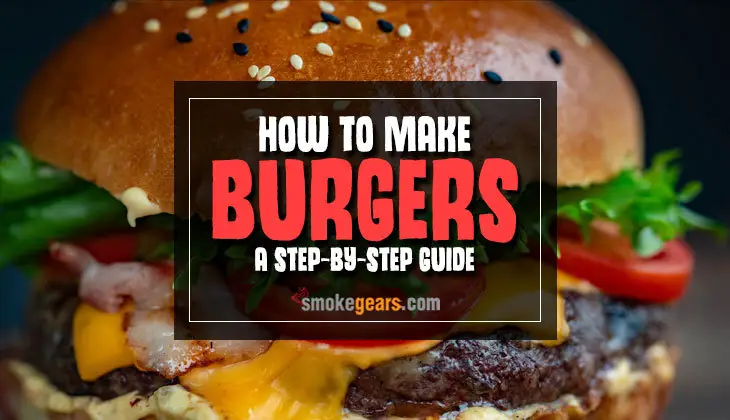How To Make Burgers: A Step-by-Step Guide
Have you ever taken a look at what's inside your hamburger? You'd expect just meat, but you'll be surprised with all the other ingredients which are listed. To keep prices relatively low, manufacturers aren't above taking shortcuts to make a cheap and filling product. So how about instead of buying a burger, you make your own instead?
Which is why we'll show you how to make burgers like a champ! Well, for this article really only one kind of burger; classic beef burgers!
More...
What Makes A Burger?
What exactly is a hamburger? If we check out Dictionary.com a hamburger is "a sandwich consisting of a cooked patty of ground or chopped beef, usually in a roll or bun, variously garnished". The patty, meanwhile, is "a thin, round piece of ground or minced food, as of meat or the like".
So going by the literal definition, a burger is a sandwich which has a meat patty; not just beef, but lamb, turkey, venison, even non-meats like tofu! So despite what some might claim, yes a veggie burger is just as much of a burger as one made with beef. This said, we're going to focus just on the beef burgers because if we covered every single variant, we'd be here all day.
What Do You Need To Make A Burger?
In theory, the only thing you need to make a burger is just beef. The fat content should, in theory, bind the patty together. In practice, binders and fillers are commonly used. And the beef isn't always just beef. Or even the cuts of beef you were hoping for. Therefore, at least for us, the three important ingredients for a burger are,
And some might argue that the last one isn't even needed!
Picking Your Meats
So, how do you go about picking your meat? If you think you can walk into the grocery store and pick a pack of hamburger meat you're not wrong, but you will be unhappy with what you find inside. See, hamburger meat tends to be the cheapest cuts, from just about any animal which are ground up and combined with cheap fillers.
If you read the back of the package, you're going to not be pleased at all with the ingredients. So if you want the best burgers, you'll want the best cuts. Or at least the affordable cuts that don't skimp on quality.
Ground Beef:
Ground beef is the cheapest option, and one that's at least being honest. It's beef, but not the best cuts. Tongues, hearts, livers, stray cuts, leftover cuts, and fat all make up ground beef. You're not going to be seeing sirloin cuts unless it's specifically stated to be ground sirloin. Ground beef is a cheaper and safer choice then hamburger meat.
We say safer, and we do mean it. With USDA regulations, only cuts of the cow that are consumable for humans are allowed in ground beef. On the flipped side, the ingredients don't exactly have to be disclosed either. So your ground beef more than likely has a tongue, stray cuts, hearts, etc. But if it's cheap it's cheap!
Chunk:
Chunk is the tough muscles found at the shoulders of the cow. You'll find it in rectangular cuts, about one-inch thick, and with parts of the shoulder bone attached. There is less fat than ground beef, 15-20% fat compared to the 30% fat found in ground beef, thanks in part to the connective tissues found around the shoulders.
Chunk is a favorite of grillers worldwide, and you likely grilled a chunk steak at some point, due to how tender the meat is. This makes chunk perfect for making a hamburger; especially if you're making just a single serving. If you want to forgo having to wrestle the gristle off, you can normally find pieces of chunk steak sold for stews or pot roasts; all perfect to create a burger from.
Chunk is also a cheaper cut, so if you want something a little more fancy than ground beef but at the same time won't break the bank, then chunk streak is going to be right for you.
Round:
Round cuts of steaks come from the rear upper legs and rump, and tend to be divided into "Top," "Eye," and "Bottom" cuts; you can make a guess as to where the name comes from. The meat is lean, only 10-15% fat, and tends to be moderately tough. Round cuts are preferred cuts for roasting or using in slices; such as roast beef.
For burgers, well, the end result tends to be tougher and dryer than other cuts. Some have complained that burgers made from round cuts lack that certain "beefy" flavor. This isn't to say that the cut is bad for burgers; it's just a different experience when you compared to chunk or sirloin. Some people like the drier flavor, and others claim round is perfect if you want to add extra fillers for flavor.
Like chunk, the round isn't that expensive of a cut and you can find it in a variety of sizes.
Sirloin:
Found right next to round steaks, that is just in front of the rump, sirloin is a popular and expensive cut due to the flavor. Much like round steak, sirloin tends to lack fat which makes the resulting burger drier if you use just pure sirloin; but it'll have better flavor. Because of the high price, making pure sirloin burgers isn't very economical.
There are of course more choices of beef out there, but these four are the most common ones you'll find.

Where To Buy Meat?
Well, from a store unless you happen to have a cow handy. Joking aside, you can buy your cuts of meat at most supermarkets. Be sure to read the ingredients carefully, as added binders do happen to be present. If you just want the best-of-the-best, look into a local butcher. Not only will they have better choices of meat, but they'll also have better burger patties on hand!
We do recommend making the patties at home; it's easy and also strangely fun. But if you want more premium, pre-cut, and ready-to-cook patties, then a butcher will be your best bet. But if you're looking just for the cuts themselves, a supermarket will be perfectly fine.
The Importance Of Fat Content
If you have a grill, which we're pretty sure you do since you're reading this article, you know that fat is both a godsend and a menace. If you have too much fat in your meat, not only will you have shrinkage of the meat but you're left with a lot of greases to clean up. If the fat content is too low, then the end result is a cut of meat that's tough to eat and chew and smaller compared to what you started with.
So a balance of fat-to-meat is quite important. For burgers, the balance of fat-to-meat ensures not only that your burgers are easy to eat, but also tasty! Hence why we said a pure sirloin patty, while great in theory, will be tough to eat. What is the fat-to-meat ratio you'll want to achieve? Well, it varies.
Most stores will sell their hamburgers with a ratio of 80/20; 80% meat, 20% fat. The cheapest commercial grade is 60/40, while the leanest cuts are 95/5. Restaurants and burger joints tend to prefer 70/30 0r 80/20. We recommend the 70/30 and 80/20 ourselves. 70/30 is perfect for thinner patties, while 80/20 is perfect for thicker patties.
How do you add more fat to your patties? Well, glad you asked! Although we're about to cover that in a bit. For now, let's look at the recommendation of meats!
Which Meat Is The Best Meat for Burger?
So, which type of meat is the best when you're making a burger? Well, it depends on what you want really. There is no "best meat"; instead, you'll want a combination. Recall what we said about sirloin burgers; great in theory, not so much in practice. You want the flavor of sirloin but with the fat content of a chunk burger. Why not combine them?
For example, a mix of 50% sirloin and 50% chunk provides all the flavor of sirloin but with the juiciness of the chunk. But why stop there? Grilling is all about experimenting, after all, so why not try round mixed with chunk? Or maybe combine chunk, sirloin, and round? It's up to you, and your wallet, but never feel scared to experiment with different cuts and combinations.
It's a good idea to write down your experiments so when you find one that's perfect you'll be able to recreate it later on.
Binders, And Fillers, And Oh My
Let's go over binders and fillers. This is where the addition of more fat comes in, although we don't recommend dumping in lard to your patty mixture. Unless of course you just happen to like a lot of lard in your burgers; we don't judge.
Binders:
Meat is the muscle of an animal, with the fat and other connective tissue keeping the muscle together. Without fat, the muscle tends to not hold itself together. Despite raw meat feeling like putty, and you would assume it sticks together, it tends to not actually hold together all that well if the fat content is too low.
This is where binders come in, and why they're very important if you're adding in extra ingredients which we'll cover in a moment. The binder is to hold the meat and ingredients all together, and without it, you'll find your patties falling apart with ease. The most common binders are eggs thanks to their higher moisture content making the resulting patties "sticky".
Dry binders include bread crumbs, oats, flax seeds, and even wheat germs. Whatever provides just enough moisture to keep everything together.
Fillers:
Now fillers are extra ingredients you want to add to the burger. This includes onions, sauces, cheese, condiments, and of course bacon. Because who doesn't like more meat in their meat? Since these ingredients rarely include extra fat, a binder is almost always needed to keep your patties together.
Do You Need Binders And Fillers?
No. For some purists, a "true" hamburger is only the meat and some salt and pepper. Anything else isn't a real hamburger; despite the definition of a hamburger being literally a patty sandwiched between a bun. That said, filler and binders are strictly optional unless you decide to include a filler; as said, you'll need the binder then.
Can You Add Extra Fat To Your Burgers?
Yes, but you need actual beef fat and not say lard or butter. This is easier said than done, as most meat is sold with the fat still attached and supermarkets tend to not exactly carry trimmed fat. A butcher might be able to help you get some spare fat, but it's better greased.

How To Make A Burger Step by Step?
So now that we've covered the basics of what you'll need and why, let's start on building our patties!
Make Thin Patties
Thin patties are perfect if you want to stretch what beef you have as much as you can. Or maybe you're watching your diet. Whatever the case, the first thing you need to do is get your hands wet. Use either water or vegetable oil to keep your hands wet, as this prevents the patty from sticking to your hands.
Viola! Your thin patty is now ready!
Make Thick Patties
Do we even need to explain why you'd want a thick patty? OK. A thick patty is nice, big, and juicy? Happy? Regardless, like a thin patty you need to get your hands wet. Use either water or vegetable oil to keep them wet, which will prevent the ingredients from sticking to your hands as you shape the patty.
Now you have a plump, juicy patty ready for the grill!
How To Properly Grill A Burger
Now your homemade patties are ready to grill! If you want to add salt to your burger, do it right before it goes on the grill and not a moment sooner or later. Salt will pull moisture from the patty, and your patties likely don't have that much moisture, to begin with. Most people add salt after cooking their burgers for this exact reason.
Next, you want your grill hot regardless of whatever the type is. You still need the meat to be far enough for the fire in order for it to not sear and burn. You'll know that the meat is ready when the pink juices start to leak out. As an interesting note, this isn't blood which some might think, but instead myoglobin. This is a red protein that carries blood, hence why it looks similar.
Depending on the size of the burger you made in the previous section, your cooking time will be between four to five minutes for a thick patty and two to three minutes for a thin patty. The thicker the burger, the longer it will take to cook. But not too long, thankfully. Both sides need to be cooked, so only flip them once or else you'll lose their juice and may fall apart.
Never press down with a spatula as this pushes out more juice; it does not make the burger cook faster. You see this in movies and TV shows all the time, and it's just to show the audience that the burgers are cooking and create that famous sizzle sound. And it goes without saying that you shouldn't leave your burgers unattended.
When it's ready, build your burger and enjoy!
Our Top Five Favorite Burger Recipes
Building your own burger, while not exactly rocket science, can be tricky. Do you go classic? Do you experiment? If you're short on time, try these five recipes we highly recommend!
1. Jenn Segal Juicy Steakhouse Burgers
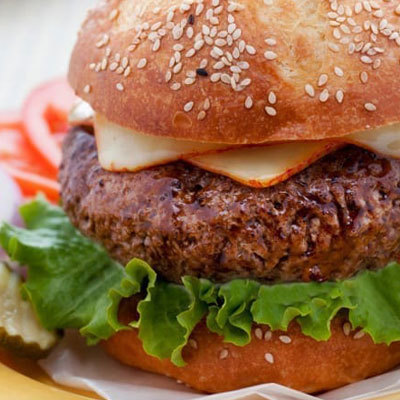
For this recipe, you'll need two pieces of white bread without the crust, 1/3 milk, 2 1/2 teaspoons of kosher salt, 1 teaspoon of ground pepper, 3 minced garlic cloves, 1 1/2 tablespoons of Worcestershire sauce, 2 tablespoons of ketchup, three pounds of ground beef, and 3 finely sliced scallions if you want. Start by mixing one slice of bread with the milk, mixing with a fork until you have a nice, chunky paste.
Add the spices and mix until all the ingredients are fully mixed. Then add the ground beef with scallions. Mix well, and create eight equal-sized balls, or four if you want larger patties. Flatten them out into a 3/4-inch patty, make an indent in the center, and grill! The mixture of bread and milk not only help keep the patties together, but also keep them nice and moist.
This recipe from once upon a chef.
2. Amanda Finks Classic Burger

You'll need 1 1/2 pound of ground beef, 1 tablespoon of Worcestershire sauce, 1 1/2 teaspoon of seasoning salt, 1 teaspoon of garlic powder, and finally 1/2 teaspoon of ground black pepper. Combine all the ingredients in a bowl mixing well, and pull out the mixture in full once you're done. Divide it into four equal sizes, rolling each part into a patty.
Flatten the patty down into a 3/4-inch patty, make an indent in the middle, grill, and enjoy! These patties are nice and thick, which a wonderful exterior and delightfully tender interior.
Recipe from the wholesome dish.
3. Kristin's Burgers
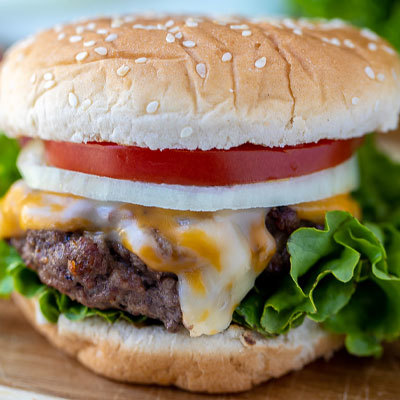
A simple, but wonderful, recipe. Start with 1.5 pounds of ground beef, adding it to a mixing bowl along with 2 teaspoons of Worcestershire sauce, and 1/2 tablespoon of dried onion soup mix. Mix everything by hand, and shape the resulting mixture into four different patties that are 3/4-inch in size. Put an indent in the middle, grill, and enjoy!
The dried onion soup mix really brings out the flavor without being overpowering, and given how some people can't stand the texture of onions but love the flavor, this is the burger for them!
Recipe credit a mindful mom.
4. Sommer Collier's Burgers
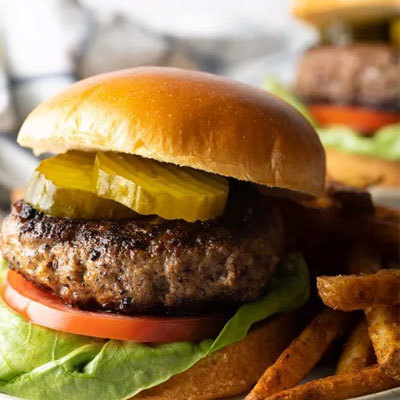
For this recipe you'll want two pounds of ground meat, 1/2 cup crushed saltine crackers or Panko breadcrumbs, 1 large egg, 2 tablespoons of Worcestershire sauce, 2 tablespoons of milk, 1 teaspoon of salt, 1 teaspoon of garlic powder, 1 teaspoon of onion powder, and then 1/2 teaspoon of freshly crushed black pepper.
For this recipe, mix all the ingredients into a large bowl, taking out the resulting mixture and dividing it into six slices. Each slice should be rolled into a ball, flattened into a patty that's 3/4-inch in size, and then indented in the middle. These patties are nice and juicy, like what'd you get from a fancy burger house!
Recipe credit a spicy perspective.
5. Kylee's Homemade Burgers
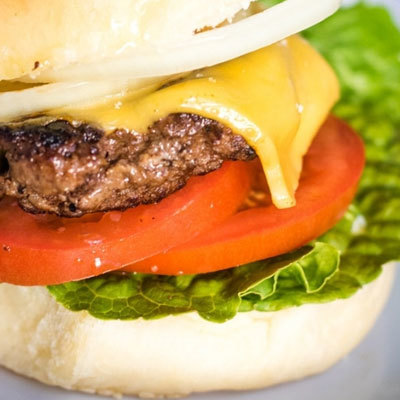
Our last recipe calls for 2 pounds of ground beef, 1 teaspoon of freshly cracked pepper, 1 teaspoon of kosher salt, 2 tablespoons of dijon mustard, and then 1.5 tablespoons of Worcestershire sauce. Mix everything into a bowl, and remove the mixture to divide into six slices. Each slice should be rolled into a ball, pressed into a 3/4-inch patty, have an indent pressed in the middle, and grilled.
The mustard really provides a kick with these burgers while not being overly spicy either.
Recipe credit kylee cooks.
Frequently Asked Questions (FAQ):
What Can You Add To A Burger?
Well, there is quite a lot you can add. Just about anything, actually! Vegetables, meats, cheeses, even fruits! The most common vegetables added by far are onions and peppers. Onions provided a richer flavor to a patty, much like peppers, but some don't like the texture of cooked onions all that much. Peppers, providing a spicy flavor, tend to go unnoticed texture-wise.
Cheese, and especially cheddar cheese is another popular choice. It melts right into the patty and you don't have to add cheese to your burger later; unless you want more cheese, of course. And then of course there is bacon; some argue that it's overkill, others say it marries perfectly with the burger. It's up to you, really.
Lastly, there are classic spices like salt, pepper, cayenne, chili, etc.
How Do You Keep Burgers From Falling Apart?
You need a good binder like flour, eggs, oats, breadcrumbs, etc. This will keep your burgers packed together, and is also important to have when you have to work with fillers.
How Can I Make My Burgers More Flavorful?
By adding fillers like mentioned above, or by adding spices to the mix. Feel free to experiment while making burgers, adding ingredients to the mix that you think to sound good or would taste good.
What Can I Add To My Burger To Improve Flavor?
You can add vegetables, spices, cheese, even fruits if you're feeling really up to it. However, if you just want a simple burger, then adding some spices to the mix will work just as well.
What Spices Go Well With Ground Beef?
When it comes to shopping for spices, you can always go with the old staples like salt and pepper. If you're feeling more adventurous, however, try adding spices like basil, bay leaves, Cayenne Pepper, Chili Powder, garlic, cumin, cilantro, or curry powder. Usually, you'll want spices that won't over-take the beef in flavor; only improve the flavor.
Do You Season Burgers Before Cooking?
You can! Some people like to add the seasoning straight into the patty, others like to season their burgers after the fact. There is no right or wrong way to season your burgers.
Why Put An Ice Cube In A Patty?
You may have seen this circulating online; chefs claiming how wonderful it is to add ice cubes to a burger. They're not wrong, believe it or not. Most foods, like meat, will react to heat with a chemical reaction known as the Maillard reaction (we've written an article on that). This makes the flavor better, but also dries the patty out.
By adding an ice cube in the center of the patty, the ice will melt and lower the surrounding temperature. In turn, this makes the patty much more juicy and tender. And since it's just an ice cube, there is no after-taste!
Should You Salt Your Patty?
You can, but as we mentioned earlier, the salt will draw moisture out of the patty. This will make the meat have a "crust" of sorts, but hey, some people like their burgers like that. Once again, there isn't a right or wrong answer.
Now you're a true burger master! Well, OK, you still have much to learn. Feel free to experiment when making the burgers you want; you never know what results in you might find!

